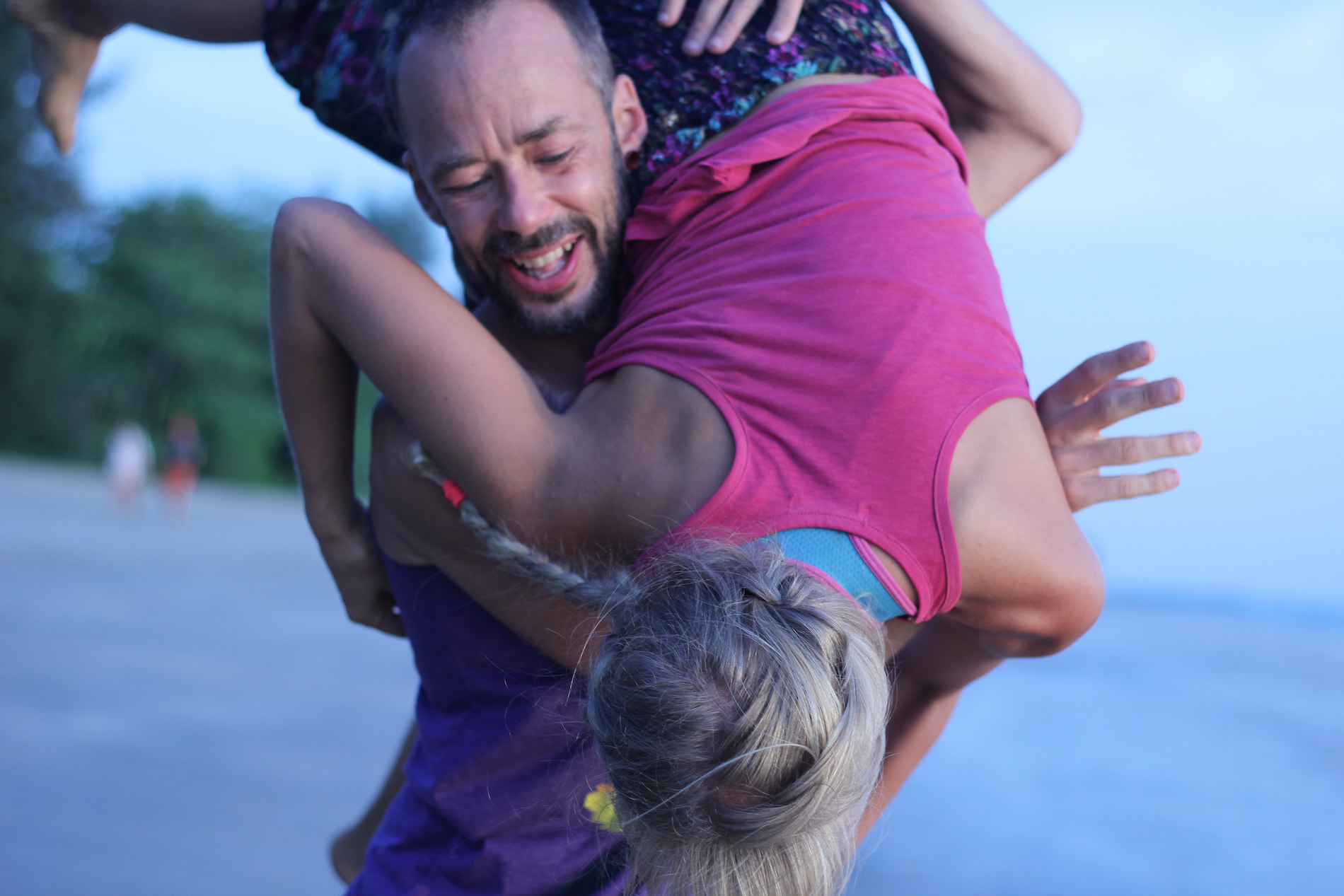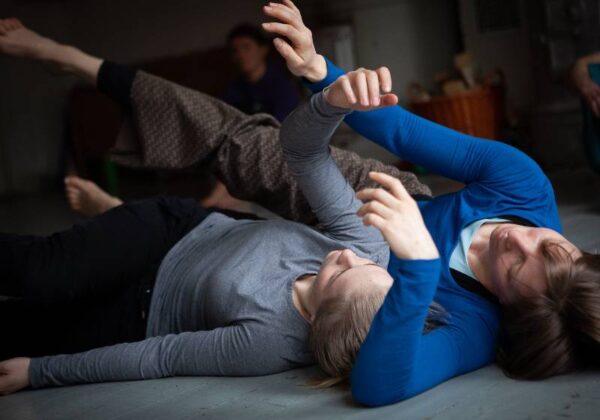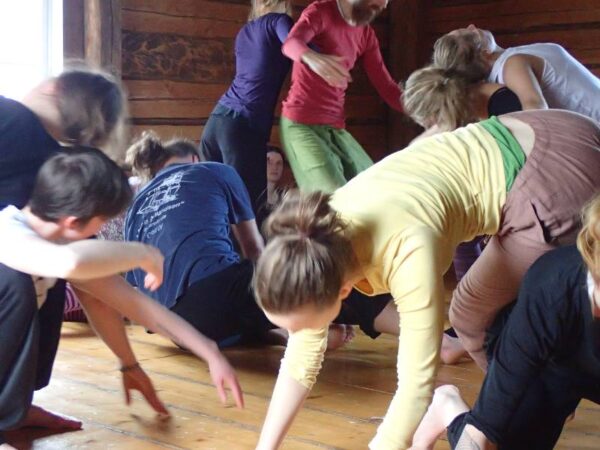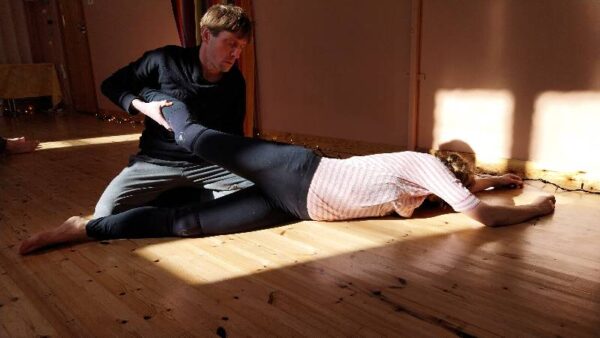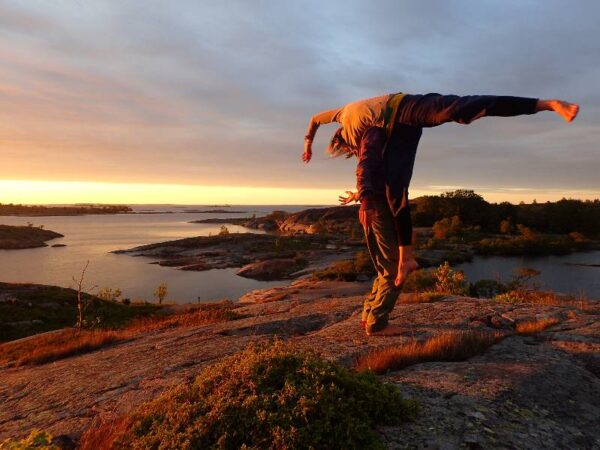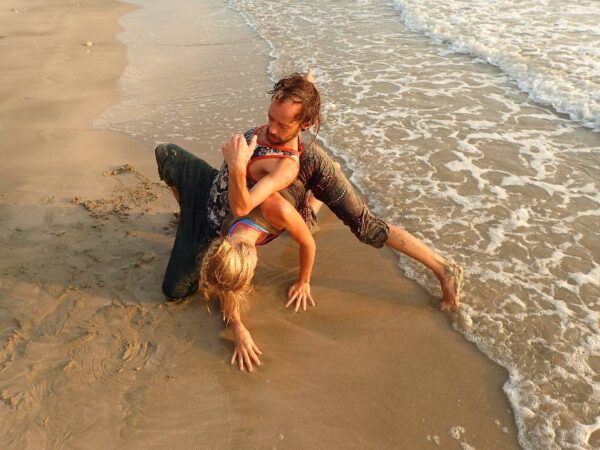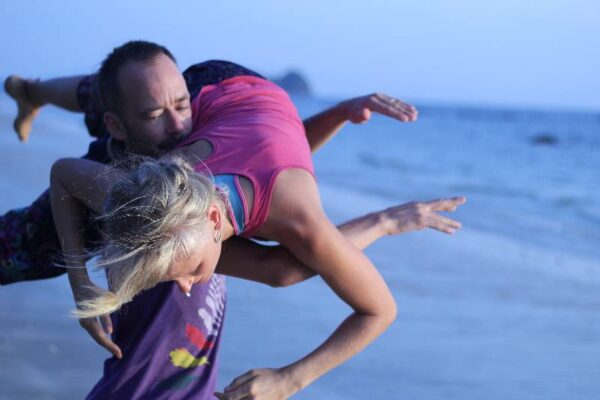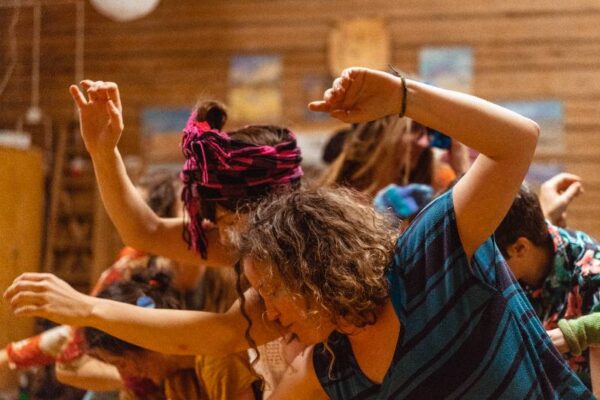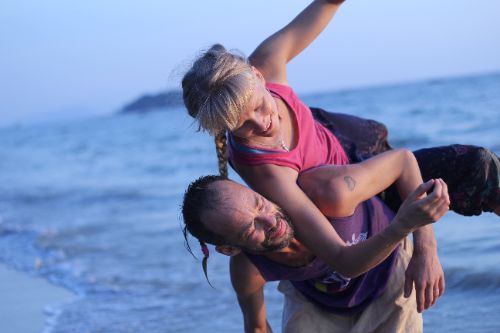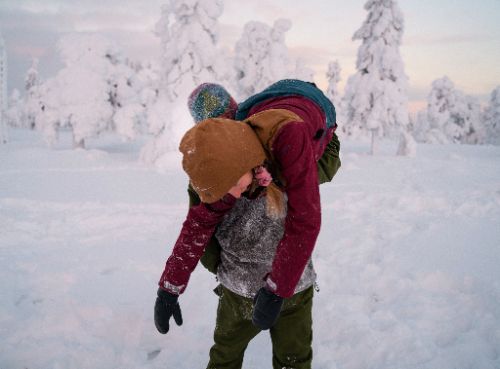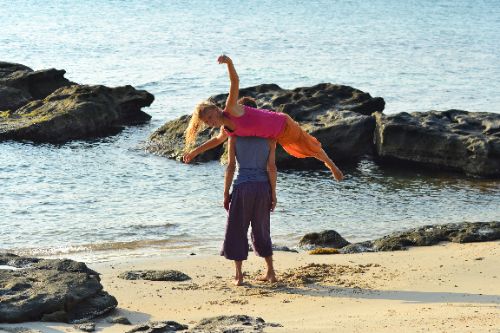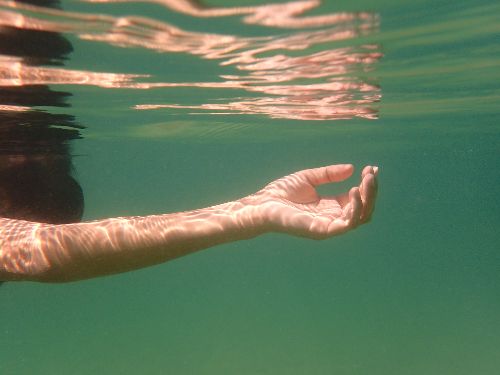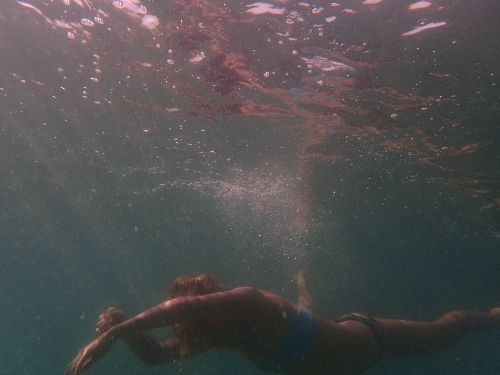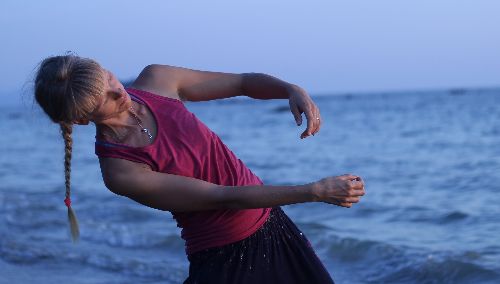MOVEMENT AND COMMUNICATION through touch; share the vocabulary of receiving and giving impulses through the landscape of our bodies. With one or many partners we’re in an exploration of how we in dance can follow and be followed through the point of contact; adjust our weight on another and navigate being upside down and changing levels. In Contact Improvisation (CI) we improvise dance influenced by techniques from somatic movement, contemporary dance, material arts, partnering and improvisation.
PRACTICE Body and spatial awareness, alignment and ergonomics, release-techniques, partnering, improvisation, instant composition and co-creation. You will develop your internal and external awareness and get lots of tools for improvisation as well as understanding of how you organize your body in movement. CI is a nutritious space to explore your breathing sensing body and your curiosity towards possibilities of movement and sharing the fun of dancing together with others.
BACKGROUND Contact improvisation is a postmodern dance form, practiced for social dance and contemporary dance as well in circus and theater. CI has its roots in the 70’s when dancer and choreographer Steve Paxton developed an experimental dance-performance which evolved into its own vocabulary and technique. Today CI is a worldwide network of social dancing with festivals, gatherings and jams. Steve Paxton and those who early developed the dance form decided to not patent on Contact Improvisation. One statement is that the form itself is in ongoing exploration and involvement, built on participatory structures; we learn from everyone attending the dancefloor and by sharing inspiration, exploration and uniqueness.
“The improvised dance form is based on the communication between two moving bodies that are in physical contact and their combined relationship to the physical laws that govern their motion—gravity, momentum, inertia. The body, in order to open to these sensations, learns to release excess muscular tension and abandon a certain quality of willfulness to experience the natural flow of movement. Practice includes rolling, falling, being upside down, following a physical point of contact, supporting and giving weight to a partner.” /—early definition by Steve Paxton and others, 1970s,from CQ Vol. 5:1, Fall 1979

